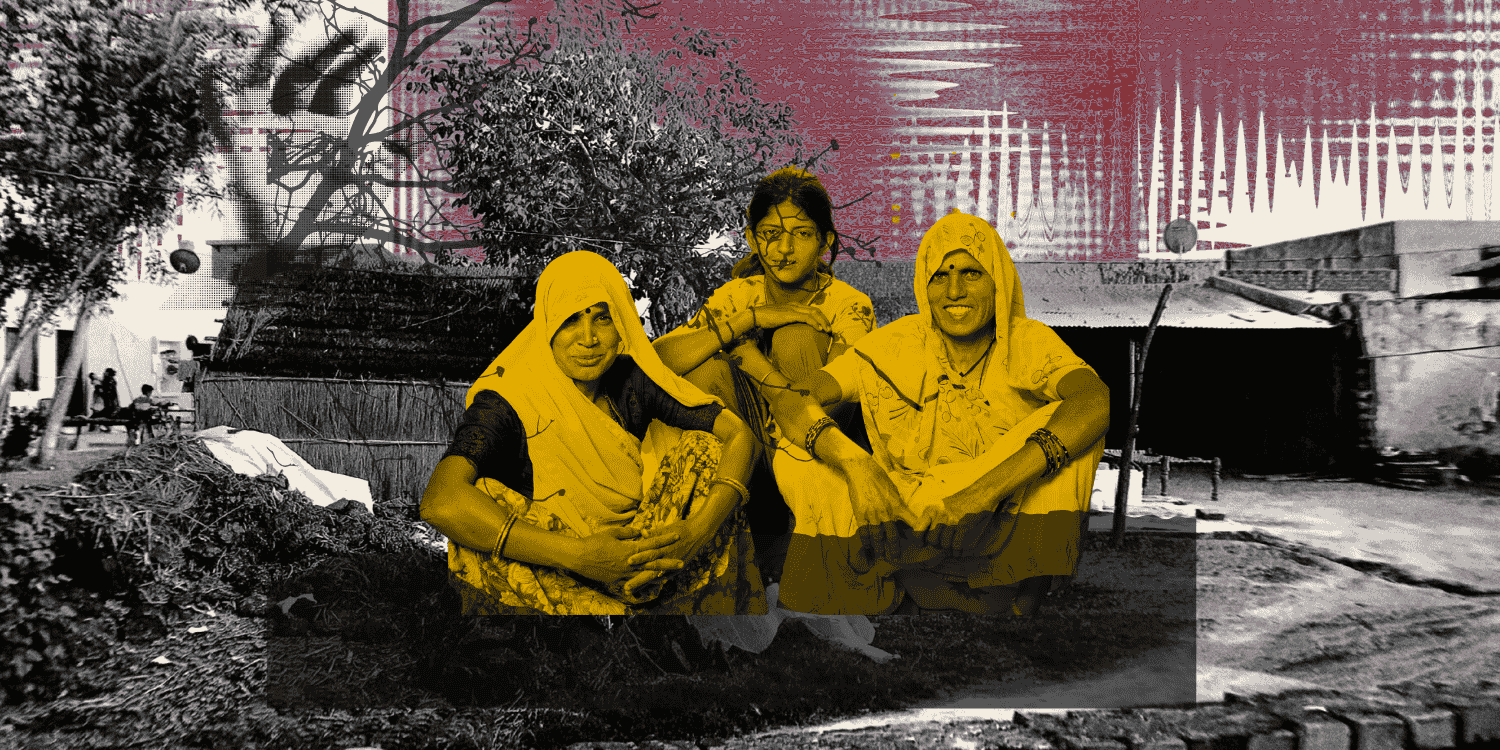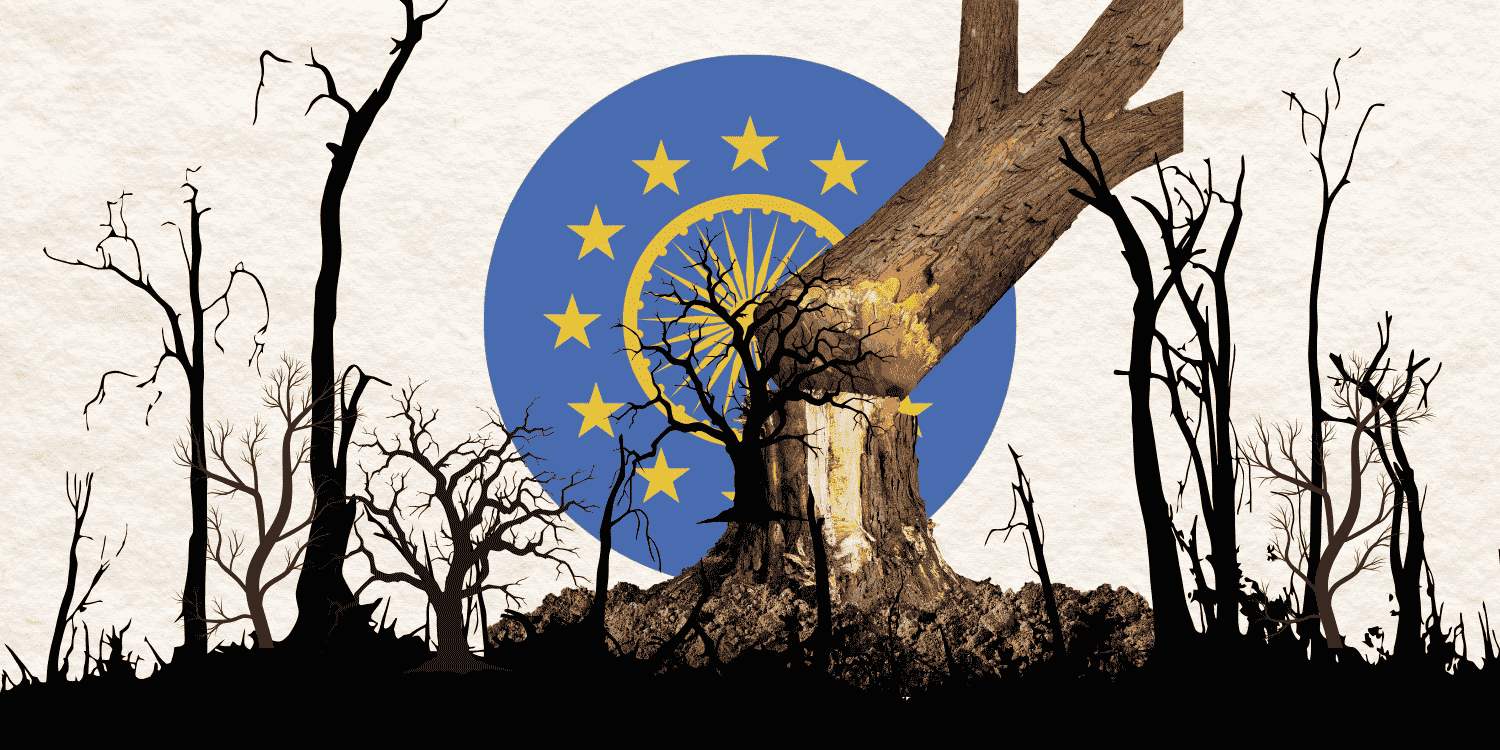Introduction
Election campaigning in India, the world’s largest democracy, has undergone a profound transformation in recent decades. From traditional methods relying on grassroots mobilisation and rallies to the integration of sophisticated technology and data-driven strategies, the evolution of election campaigning reflects broader societal changes and advancements in communication and information technology.
Independence from British rule in 1947 marked modern India’s tryst with democracy and the beginning of a political journey characterised by debates, elections, and the quest for inclusive governance. In the early years, election campaigns relied heavily on traditional methods such as mass mobilisation, public rallies, and print media advertisements. Political parties traversed the length and breadth of the country, engaging directly with voters at their doorsteps and through mass gatherings. These campaigns, driven by charismatic leaders and party machinery, laid the foundation for India’s democratic ethos and the primacy of mass mobilisation in electoral politics.
However, India’s political landscape began to change in the latter part of the 20th century. With the advent of television and the liberalisation of the economy in the 1990s, election campaigning witnessed a paradigm shift towards modern techniques and strategies. Political parties started embracing mass media as a potent tool for shaping public opinion and disseminating their messages to a wider audience. Television commercials, once a novelty, became a staple feature of election campaigns, amplifying the reach and impact of political messaging.
The 21st century ushered in an era of unprecedented technological advancement, reshaping the contours of election campaigning in India. The proliferation of digital platforms and the rise of social media platforms such as Facebook, Twitter, and WhatsApp revolutionised the way political communication was conducted. Suddenly, political parties found themselves navigating a digital landscape teeming with opportunities and challenges, where viral memes and trending hashtags could sway public discourse and influence electoral outcomes.
In light of these transformative trends, this paper delves deeper into the changing landscape of election campaigning in India, examining the emergence of political strategic think tanks, the evolved usage of technology, and the shifting communication strategies that define contemporary political campaigns.
Historical Context of Election Campaigning in India
The pre-2000s era in India was marked by a distinct style of election campaigning, characterised by a blend of traditional methods and nascent forays into modern communication. Political campaigns during this period were grounded in grassroots mobilisation, mass rallies, and print media advertisements, reflecting the socio-political landscape of the time.
One of the hallmark features of election campaigning in India before the 2000s was the emphasis on grassroots mobilisation. Political parties relied heavily on local leaders, workers, and volunteers to campaign door-to-door, engage with voters in their communities, and garner support for their candidates. This approach was particularly significant in rural areas where personal connections and local networks played a crucial role in shaping electoral outcomes. Studies analysing election data from the pre-2000s era reveal a correlation between the intensity of campaigning on ground and electoral success. Evidence from the 1979 election campaign shows that Indira Gandhi’s campaign trail was planned in such a manner that she could meet as many people as possible in as many constituencies as was physically possible. Mass rallies also formed an integral part of election campaigns, serving as platforms for political leaders to connect with large audiences and rally support for their parties. These rallies, often organised in open grounds or public spaces, attracted throngs of enthusiastic supporters who gathered to hear speeches and pledges from their leaders. In the same election campaign, Indira Gandhi delivered speeches at 1,515 public gatherings across 384 constituencies, reaching an estimated audience of around nine crore individuals through her appearances or broadcasts—which none of her opponents managed to achieve; the importance of being visible to your voters cannot be understated, as this goes a long way in winning elections. Indira Gandhi led INC win the 1980 Lok Sabha elections with a record number of seats.
Print media, including newspapers and pamphlets, played a pivotal role in disseminating campaign messages and propaganda to the masses. Political parties invested significant resources in placing advertisements in newspapers, printing leaflets, and distributing campaign materials to reach voters across diverse demographics. These advertisements typically highlighted the achievements of the party or its candidates, outlined key policy priorities, and sought to sway public opinion in favour of the party’s agenda.
Election campaigning in India before the 2000s relied heavily on reaching people on the ground level, mass rallies, and print media or radio/TV advertisements. These traditional methods formed the cornerstone of political campaigns, shaping voter perceptions, mobilising support, and influencing electoral outcomes. Even today, the significance of on-ground mobilisation and mass rallies in electoral campaigns remains undeniable. However, it is crucial to acknowledge the stark contrast between the number of seats in Lok Sabha and the exponential growth of India’s population. The 31st Constitutional Amendment Act 1973 increased the number of seats in Lok Sabha from 525 to 545. In 1971, India’s population was over 54 crores. In 2011, India’s population was over 102 crores. While the population has increased, the number of seats in the Lok Sabha has not increased at all. This demographic surge means that, on average, an MP today represents more than 15 lakh voters, a staggering 4.5 times more than during the inaugural general election in 1951. Consequently, candidates face challenges in effectively reaching their constituents.
The glaring disparity between constituency size and representation underscores the urgent need for politicians to elevate their campaigning strategies. With a vastly expanded voter base to engage, traditional methods alone no longer suffice. Modern technologies and innovative communication methods have become indispensable tools for political outreach and engagement. Political consultancies have also boosted the campaigns of political parties and candidates.
Emergence and Role of Political Strategy Consultancies
The emergence of political strategy consultancies in Indian election campaigns marks a notable shift in the landscape of political campaigning. With the advent of Prashant Kishore’s Citizens for Accountable Governance (CAG) in the 2014 elections, India witnessed a novel approach to campaign management. Kishore’s strategic consultancy played a pivotal role in orchestrating Narendra Modi’s successful bid for the Prime Minister’s office, introducing a new paradigm of professional campaign management to Indian politics.
The presence of political strategy consultancies in Indian elections is growing. For instance, in the 2014 Lok Sabha elections, CAG’s innovative strategies, including the “chai pe charcha” (discussion over tea) initiative after Congress’ Mani Shankar Aiyar heckled Narendra Modi as Chaiwala (tea-vendor), effectively engaged voters and bolstered Modi’s mass appeal. This approach resonated particularly well with younger demographics and urban voters, including the Non-Resident Indians (NRIs), contributing significantly to the landslide victory of the BJP.
Subsequent elections further underscored the importance of political strategy consultancies in shaping electoral outcomes. In the 2019 elections, firms like I-PAC (Indian Political Action Committee) played a key role in crafting campaign narratives, conducting ground-level research, and leveraging technology to target specific voter demographics for the YSR Congress in Andhra Pradesh. Their efforts were instrumental in securing victories for various political parties across different states.
While research shows that voters generally vote for a political party and not an individual candidate, it is seen that individual candidates, too, are hiring consultancies these days. This happens particularly in uncertain electoral climates or to supplement party resources. Additionally, candidates’ growing financial resources and the lack of effective party machinery at the local level further drive the demand for political consultants to manage campaign activities. Many independent candidates, too, have started hiring political consultants now.
The role of political strategy consultancies extends beyond mere campaign management. These firms offer comprehensive services, including data analytics, voter profiling, message framing, and coalition building, to optimise electoral strategies and maximise electoral success. By leveraging their expertise and resources, political parties can effectively navigate the complexities of modern politics and gain a competitive edge in increasingly competitive electoral landscapes.
The emergence of political strategy consultancies represents a significant evolution in Indian election campaigns. Empirical evidence demonstrates their impact in shaping electoral outcomes, highlighting the growing reliance of political parties on professional campaign management services. The Associated Chambers of Commerce and Industry of India (ASSOCHAM) estimated that political consultancy firms likely generated revenue exceeding Rs 700 to 800 crores from the 2014 general election. As Indian politics continues to evolve, the role of these consultancies is likely to become even more pronounced, shaping the trajectory of electoral strategies and political communication in the years to come.
Evolved Usage of Technology in Election Campaigning
The evolution of technology in Indian general election campaigning has been a transformative journey, marked by advancements and paradigm shifts in communication strategies. The emergence of digital platforms and social media has revolutionised the way election campaigns are conducted. With over 243 million users, India ranks third globally in terms of Internet user base, majority of whom are the youth. Among these users, over 100 million are actively engaged on various social media platforms such as Facebook, Twitter, and LinkedIn.
Hence, the 2014 and 2019 general elections saw unprecedented usage of social media in shaping voter perceptions and mobilising support from all political parties, and were called the “WhatsApp Election” of India. Political parties leveraged platforms like Facebook, Twitter, and WhatsApp to engage with voters directly, share campaign updates, and counter opposition narratives. For instance, BJP’s “Chai Pe Charcha” campaign in 2014 utilised social media extensively to connect with voters across the country, resulting in widespread visibility and engagement for both Narendra Modi and the BJP. While the BJP has held a dominant position in the online space, other political parties are increasingly investing in IT and social media units to bolster their digital footprint, signalling a narrowing gap in their online presence.
As for data analytics, the electoral campaigns in India in the past lacked the precision and sophistication of targeted messaging. The advent of data analytics today has revolutionised campaign strategies, enabling political parties to micro-target specific voter demographics with tailored messages. Before the 2019 elections, Congress came up with “Project Shakti”, a data analysis project to gauge the on-ground data fed by its workers. By harnessing big data and predictive analytics, parties identify swing voters, prioritise key constituencies, and allocate resources strategically, thereby optimising their campaign efforts for maximum impact.
Artificial intelligence (AI) and machine learning (ML) have also emerged as game-changers in election campaigning, offering unparalleled capabilities in data analysis, predictive modelling, and optimization. AI-powered tools and algorithms have revolutionised election campaigns by enabling real-time monitoring, sentiment analysis, and personalised communication. For instance, political parties have deployed AI-driven chatbots and virtual assistants to engage with voters, answer queries, and gather feedback on key issues. PM Narendra Modi used the AI tool Bhashini to translate his speeches from Hindi to Tamil in real-time. This feat not only bridged the linguistic divide in the country prior to the elections but also marked a leap in India’s technological prowess, showcasing the potential of AI in fostering cross-cultural communication. Similarly, ML algorithms are being utilised to analyse social media trends, identify influencers, and customise campaign messages for maximum resonance. The incorporation of AI and ML has not only enhanced the efficiency and effectiveness of election campaigns but also redefined the dynamics of political communication in the digital age.
Changing Communication Strategies
Political party leaders are adapting their communication strategies by tailoring their speeches to resonate with the specific concerns and interests of different regions. For example, while speaking to an audience at Samajik Nyay Sammelan (Social Justice Convention), Rahul Gandhi spoke about his and his party’s commitment to undertaking a caste census in India. This approach involves addressing local issues that are pertinent to the electorate based on feedback from political strategists and party workers. Leaders may also reference revered figures or cultural symbols in the region to establish a connection with voters. PM Modi unveiled the statue of Lachit Borphukan in Assam during an election rally. Additionally, they may discuss pressing issues, such as water scarcity in drought-prone states or highlight specific scandals or controversies involving opposing parties. By addressing these localised concerns directly, political leaders aim to establish rapport with voters and demonstrate their understanding of regional challenges, ultimately strengthening their appeal during election campaigns.
Film stars and celebrities have long played a significant role in Indian politics, particularly in southern states where their influence can sway public opinion. With the advent of social media, a new breed of influencers has emerged, each with their own dedicated follower base. Political parties are capitalising on this trend by leveraging photo opportunities with popular celebrities and engaging in podcasts hosted by influential personalities. Just weeks before elections, the PM presented the first-ever National Creators Awards. Before the Assembly Elections 2023 in Rajasthan, the Congress-led state government in Rajasthan formalised its engagement with influencers, announcing it would issue them advertisements ranging from Rs. 10,000 to Rs 500,000 a month, depending on their reach[24]. Many politicians, including central government ministers, have been appearing on podcasts with various influencers, too. These interactions serve as effective communication strategies to reach prospective voters, especially the younger demographic, who are more likely to engage with content created by their favourite celebrities. By aligning themselves with well-known figures and leveraging their social media reach, political parties can amplify their message and appeal to a broader audience, thereby enhancing their chances of electoral success.
The changing communication strategies in election campaigns reflect the evolving nature of political discourse and the increasing role of technology in shaping public opinion. By embracing personalised and interactive communication, prioritising storytelling and narrative-building, and leveraging multimedia content for voter engagement, campaigns can effectively connect with voters, inspire action, and ultimately influence electoral outcomes.
Challenges and Way Forward
Addressing misinformation and fake news proliferation poses a significant challenge in today’s election campaigns. With the rapid spread of information through social media and online platforms, false narratives and misleading content can easily influence public opinion and undermine the integrity of the electoral process. As per the National Crime Records Bureau’s findings on crime in India, instances of spreading fake news exhibited a significant rise from 486 cases in 2019 to 1,527 cases in 2020, followed by a decline to 882 cases in 2021. Notably, Telangana featured prominently, accounting for 218 reported cases in 2021, constituting nearly a quarter of the total nationwide. Hyderabad registered the highest number of incidents among cities, with 84 cases reported in 2021.
There are instances of deepfake videos of politicians being shared to either improve the image of their own leader or tarnish the image of political opponents. Adhering to the ethical use of AI, such content should be identified and flagged. Otherwise, the wide scope of generative AI and penetration of social media can cause harm—specifically during elections.
Ensuring inclusivity and equity in digital campaigning is another pressing concern. While digital platforms offer unprecedented opportunities for political engagement, they also present barriers to access for marginalised communities and underserved populations. The digital divide, language barriers, and algorithmic biases can exacerbate inequalities in political participation and representation. Political parties and campaigns must adopt inclusive strategies that prioritise accessibility, diversity, and cultural sensitivity. This includes providing multilingual content, accessible formats, and targeted outreach efforts to engage all segments of society in the political process.
The evolution of election campaigns in India reflects the dynamic interplay between tradition and innovation as political parties adapt to changing technological landscapes and communication strategies. While campaigning methods have undergone significant transformations over the decades, the fundamental objective remains constant: to attract voters and secure electoral victories. Amidst the evolving tactics and strategies employed by political actors, it becomes imperative for voters to discern between the noise of political rhetoric and the substance of policy proposals.
As election campaigns increasingly rely on digital platforms and targeted messaging, voters must remain vigilant in evaluating the deliverables being promised over the abundance of political jargon. By focusing on the tangible outcomes and commitments put forth by candidates and parties, voters can make informed decisions that align with their interests and aspirations. Ultimately, the democratic process thrives when voters engage critically with campaign discourse, holding elected representatives accountable for their promises and actions. Thus, while the landscape of election campaigning continues to evolve, voter discernment and a focus on substantive issues remain paramount for the health and vibrancy of India’s democracy.






